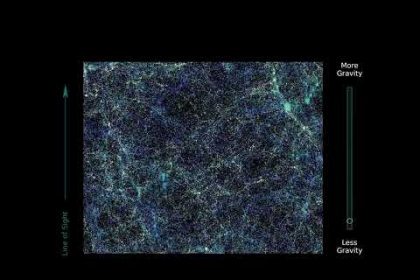Today, on November 30, the world of science and technology witnessed interesting events that have been briefly discussed in this news.
According to RCO News Agency, The science and technology of Iran and the world today was accompanied by various news. Now, in this report, we will review the summary of these news.
An Iranian became the financial director of Elon Musk’s “X” social network
Elon Musk’s company X has chosen Mahmoudreza Banki as the chief financial officer of one of the largest social media platforms, the former Twitter and the current X. Meanwhile, Elon Musk, the billionaire owner of X, has shifted his focus to a role aimed at making government more efficient.
What consequences will Trump’s arrival have for Chinese artificial intelligence startups?
The Biden administration was limited to Chinese companies developing advanced AI models, but Donald Trump could take a much broader approach in enforcing the restrictions. Late last month, the U.S. Treasury Department finalized new national security restrictions on what kinds of Chinese tech startups American venture capital firms can invest in. When the measures take effect in January, U.S. venture capital firms and other investors will be barred from giving money to advanced Chinese artificial intelligence models. After Trump takes office, his administration may expand the rules and make them even tougher.
A new system for advanced computing based on artificial intelligence
“National Center for Supercomputing Applications” (NCSA) in America has introduced the next generation research computing system based on artificial intelligence. The “DeltaAI” system is an advanced artificial intelligence data and computing resource that will be a companion to the “Delta” system. With nearly $30 million in funding from the National Science Foundation (NSF) and accessibility to researchers across the United States, DeltaEye enables scientists and researchers to tackle the world’s most challenging problems by accelerating complex artificial intelligence, machine learning, and programming. Handle efficient calculations using advanced hardware.
Preventing the import of “HEPA” filters with the nano product of Daneshbanyans/removal of 99.9% of particles and viruses
HEPA filters are an important product for the pharmaceutical and food industries, which are known as one of the important tools to deal with health crises such as the spread of Corona. Until now, these filters have been imported into the country, but recently, one of the knowledge-based companies succeeded in making these filters based on nano fibers, and according to the officials of this company, this filter has received the EN1822 international standard.
Fat cells remember obesity!
Research shows that even after drastic weight loss, the body’s fat cells carry the “memory” of obesity, and this finding may help explain why it can be difficult to maintain weight after a weight loss program. This memory arises because the experience of obesity leads to changes in the epigenome. An epigenome is a set of chemical tags that can be added or removed from a cell’s DNA and proteins, helping to increase or decrease gene activity.
The Starship rocket did not return to the platform after the sixth launch
The largest and most powerful rocket built to date has now completed its sixth launch, but unlike the previous time it was intercepted by the launch pad’s receivers on its return, it did not return to the launch pad and landed in the sea. The big 122-meter rocket “Starship” of “SpaceX” company (SpaceX) on November 19 at 17:00 Eastern time zone time (1:30 a.m. Wednesday Tehran time) from its orbital launch site at the “Starbase” base. (Starbase) SpaceX took off in South Texas and flew for the sixth time. In the previous flight of this rocket, which was carried out on October 13, SpaceX landed the large booster of the first stage called “Super Heavy” in the launch tower and restrained it with the “chopstick” arms of the tower. The goal of participating in the sixth flight was to repeat this feat, but the flight data did not support this attempt and it was not repeated.
Compilation of draft standards for low emissivity glasses
The meeting of the final technical commission of the product-oriented standard “Nano technology, low-emissivity glasses – characteristics and test methods” was held at the headquarters of Nano with the presence of experts, professors, representatives from the standard research institute, laboratories, companies active in this field and stakeholders. In this meeting, the characteristics of low-emissivity glasses, the methods of characterization of low-emissivity nanocoating, the evaluation of optical and thermal performance of glasses, as well as the durability of the coating after exposure to solar radiation and other environmental factors were discussed, and finally, the product-oriented standard of low-emissivity glasses was formulated.
Indian probe maneuver to avoid collision with South Korean spacecraft
“Indian Space Research Organization” (ISRO) recently reported that the country’s “Chandrayaan-2” lunar orbiter maneuvered in September to avoid approaching the South Korean “Danuri” spacecraft. The Chandrayaan-2 orbiter increased its orbit on September 19 to avoid approaching Dhanuri, according to the Indian Space Research Organization report. The report noted that a subsequent maneuver on October 1 also helped Chandrayaan-2 avoid possible collisions with other lunar orbiters, including NASA’s Lunar Reconnaissance Orbiter (LRO).
Application of Iranian raw material in rubber and paint and resin industry
The researchers of one of the technology companies offered zinc oxide nanoparticles for use in rubber and leather industries, which according to them, this raw material has a high specific surface area and low apparent density. In an interview with ISNA, Reza Roghnizadegan, the CEO of this company, mentioned nano production for use in tile and ceramic factories, rubber making, paint and textiles among the research fields of this company and said: Our materials are used as antibacterial and anti-UV additives as well as baking activators. It is used in the rubber industry and as a hydrogen sulfide gas absorber in the catalyst industry.
Extraction of water from the air is possible without energy consumption!
A research group succeeded in identifying three organic compounds with high chemical versatility for growing organic elastic crystals. A group of researchers from Jilin University, New York Abu Dhabi Smart Materials Laboratory and Center for Smart Engineering Materials, led by Professor of Chemistry Pance Naumov, have developed a new crystalline material that can remove water from fog without any energy. This innovative type of smart crystal, or Janus crystals, is inspired by desert plants and animals that thrive in arid conditions.
Counterfeit chips can be detected with a nano-tool
The $75 billion counterfeit chip market threatens the safety and security of many sectors that depend on semiconductor technologies, including aerospace, communications, quantum computing, artificial intelligence and finance. A new counterfeit detection method has been proposed to help global chip makers and users avoid the dangers posed by the rise of counterfeit chips on the market. This optical tamper detection method was developed at Purdue University and uses deep learning to detect tampering in semiconductor chips. This technology, called RAPTOR, is used to process manipulated optical responses. In this method, unauthorized manipulations such as wear, heat treatment and tearing of different parts of the part are easily identified.
“Jaminay” was equipped with memory
Google’s Gemini chatbot can now remember things like information about a user’s life, work, and personal preferences. As mentioned in Google’s official account on Platform X, the memory feature has started for some Gemina users, including the reporter of this news. Gemina, like OpenAI’s ChatGPT, adds past content to the current conversation. For example, a user can simply tell Geminai to remember his favorite dishes so that the next time he asks the chatbot for restaurant recommendations, it will tailor its suggestions to the user’s interests.
Allocation of 270 billion Tomans for the implementation of two support projects, Vazavi and Ahmadi Roshan
The deputy official of the National Elite Foundation announced the allocation of 270 billion tomans for the implementation of two key projects “Shahid Ahmadi Roshan” and “Shahid Vazvai”. Stating that the revision of the projects implemented in recent years is on the agenda, Saeed Khodaygan stated: Among the 23 projects of the foundation that have been implemented in recent years in order to identify the guidance and support of the elite, some have been successful and others have failed. The desired results have not been achieved and have been stopped, and the request to revive some of them more than other plans has been raised by the elites.
Setting up the world’s largest artificial gravity center in China
China is launching the world’s most advanced artificial gravity facility. China is now home to the world’s most powerful centrifuge capable of creating artificial gravity. The facility enables a wide range of experiments to help understand scientific phenomena, simulate geological events and test new materials. Located in the eastern Chinese city of Hangzhou, the Center for Centrifugal Gravity and Interdisciplinary Experiment (CHIEF) houses the world’s largest hypergravity centrifuge.
Getting 4 teams to the construction stage of the U3 cube satellite engineering model
Iran Space Research Institute, with the help of Sharif University of Technology, with the aim of promoting the space industry and training expert personnel in the scientific and academic circles of the country, organized a cube satellite challenge competition. Hassan Salarieh, head of the Iran Space Research Institute, while explaining the latest status of the cube satellite challenge competition, said: This event is known not only as a scientific competition, but also as a platform for improving knowledge and experience in the field of space technology. It started in February 1402, which was well received by universities and researchers.
Preparation of a healthy drink with saliva and bird’s nest!
Scientists have developed a new health drink that combines an unexpected ingredient, bird’s nest, with cocoa and soy, and could be the next breakthrough in functional beverages. Of course, before you imagine twigs and leaves in your morning smoothie, you should know that this nest is not the same as the one you see in your backyard. Considered a delicacy in Asian cuisine for centuries, edible bird’s nests are actually made from the saliva of puffins, small birds found throughout Southeast Asia. When these nests are ground into a powder and combined with other carefully selected ingredients, they create a drink that can help manage blood pressure, reduce inflammation and control levels, according to new research published in Food Quality and Safety. Blood sugar helps.
Microsoft’s artificial intelligence detects cancer
Brain experts at Microsoft’s medical and biotechnology research group, Health Futures, have developed an artificial intelligence model that detects tumors, skin cancer, chest infections and other health problems. By feeding this artificial intelligence data from conventional imaging methods, health professionals can use the model to detect signs of disease that might otherwise go unnoticed. Health Futures claims that BiomedParse’s AI has successfully detected skin cancer, cysts, chest infections caused by Covid-19, and tumors throughout the body.
end of message
RCO NEWS

















